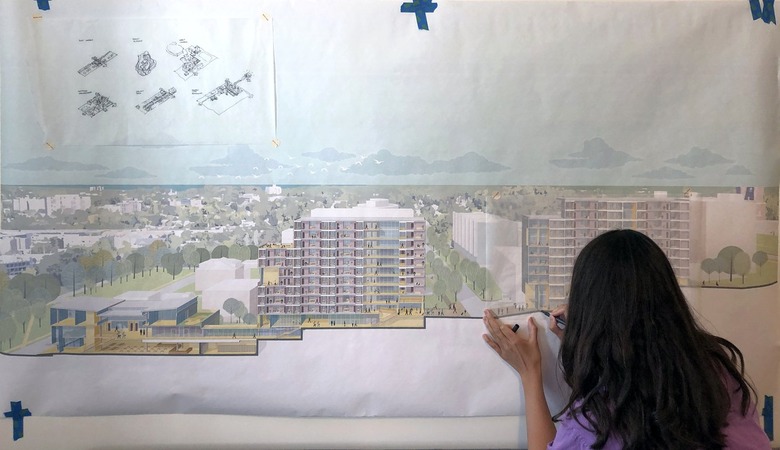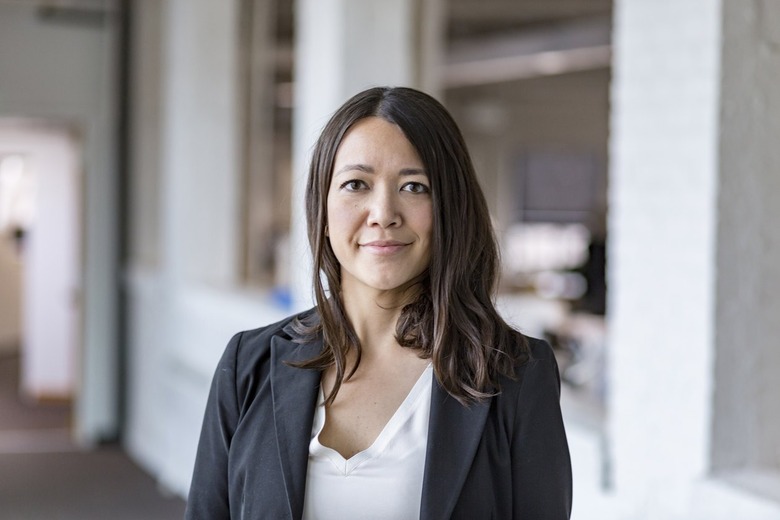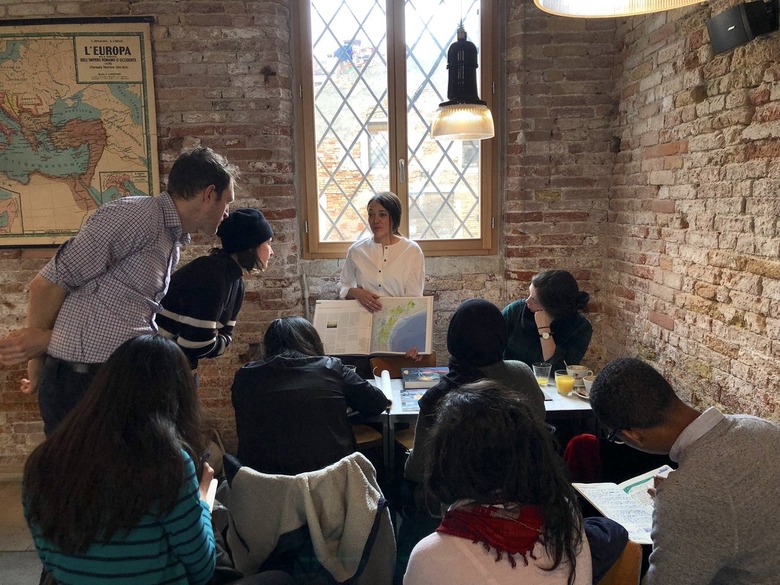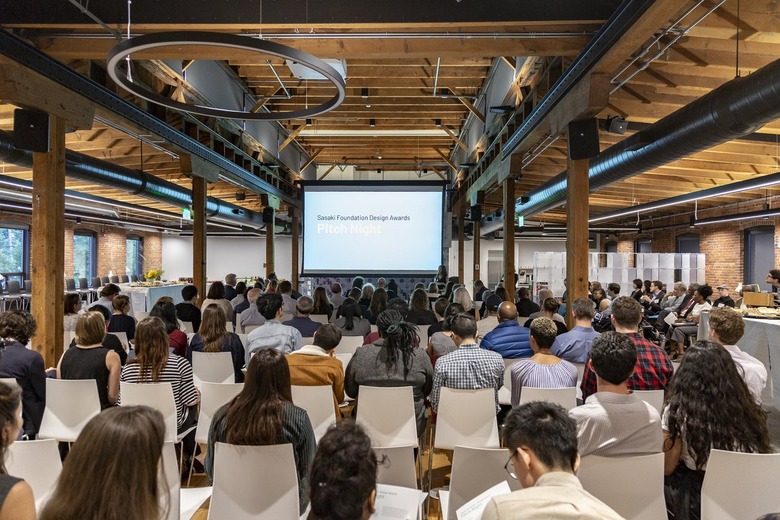Urban Designer Mary Anne Ocampo On Her Approach In A Male-Dominated Industry
Mary Anne Ocampo grew up in a small coal-mining town in Kentucky, but her work as an urban designer who shapes the architecture of cities has taken her all over the world. For Ocampo, choosing urban design as a career path meant she could combine her love for cities and creative processes with her desire to design environments that could positively impact people's lives.
"Urban design can shape people's experiences," Ocampo tells Hunker. "It encompasses architecture, landscape, mobility, infrastructure, and programmatic uses that are integrated within socio-economic and cultural contexts. It's about how all those things function independently and together as part of the physical environment. In short, urban design is about designing and shaping cities and their surrounding areas."
Ocampo has been practicing architecture for 17 years and holds a bachelor's degree in architecture from the University of Kentucky and a master's degree in architecture from Cornell University. Wanting to hone her specific interests, Ocampo also earned a master's degree in urban design from Harvard University. Today, she serves as an associate professor of the practice of urban design and planning at Massachusetts Institute of Technology, and also works as a principal urban designer at Sasaki Associates, a Boston-based architecture firm.
Some of Ocampo's international projects include Universiti Teknologi Petronas, a research and development district in Malaysia, and Ananas New Community, a collection of interconnected community gardens in the Philippines. The urban designer also specializes in college campuses and has worked on creating design plans for Clemson University, Syracuse University, and the University of Austin campuses.
Ocampo says she was motivated to pursue urban design because of the architects she looked up to. Among others, she cites Maya Lin, who designed the Vietnam Veterans Memorial in Washington D.C., and Jeanne Gang, who designed the Gilder Center expansion at the American Museum of Natural History in New York City.
"There were prolific women who I studied in architecture school to understand their thought process and their way of approaching architecture, and those women absolutely inspired me," Ocampo says, adding, "I had many great women teachers too. Wallis Miller at the University of Kentucky was a wonderful history professor. I also had great women like Lily Chi at Cornell, who shaped my intellectual approach to architecture."
Image description: Headshot of Mary Anne Ocampo. Credit: Sasaki Associates
While Ocampo has grown up in an era of talented and prominent female architects, she hasn't been exempt from sexism in the male-dominated field. According to a 2021 National Council of Architectural Registration Boards report, men make up 76% of architects in the United States, which can contribute to on-the-job gender bias.
"There have been instances where people think I haven't had enough professional experience, and that can undermine my expertise."
"There are a lot of biases that minority groups experience in all industries, including architecture," Ocampo states. "For me, it's been an intersectional experience, based on my gender and based on being Asian American. For example, there have been instances where people think I haven't had enough professional experience, and that can undermine my expertise and experience."
Ocampo also has a particular way of leading urban design projects. She aims to be extremely inclusive, making space for people to talk during presentations. During those meetings, she's said people weren't sure if she was the leader in the room because she actually held space for others. Ocampo doesn't feel the need to be viewed as the only authority in the room, which is how many architecture projects are traditionally led.
Image description: Mary Anne Ocampo instructing during an MIT class visit to Venice, Italy. Credit: Rebecca Ocampo
"Sometimes people want one person, one voice dominating the conversation, and I tend to share the room," the urban designer says. "But I think the culture and the industry is changing where there are many ways of leading — I embrace a culture that promotes including diverse voices within the process, from my internal team to the communities I collaborate with."
Ocampo explains that while half of the students in her degree programs identified as women, when it was time to start practicing, the female population shrank. She thinks it has to do with the architecture industry's lack of work-life balance that makes it difficult for working parents to participate. Women in the industry can also have trouble accessing opportunities, especially when there are few mentorships and sponsorships available specifically for women. Ocampo says that one of the most important tools women need to succeed in the industry is a supportive community, which is hard to come by in such a competitive environment.
"At the core of the urban design practice is building a strong foundation of skills and knowledge; being collaborative, flexible, and intentional in your creative process; and committing to the communities you serve," Ocampo states. "My advice to women interested in urban design is to find a place (school, organization, or firm) that aligns with your values. Find your cohort of people who can inspire and support you. And then use your voice to empower and uplift others."
"Find your cohort of people who can inspire and support you. And then use your voice to empower and uplift others."
Community is also important to how Ocampo designs, and she says that urban designers must have a deep understanding of a place — both historically and within its existing conditions — and center the people who will live and work there.
"I've worked in Metro Manila, Philippines, and I've also done work in Kabul, Afghanistan. The international projects are compelling because you immerse yourself in understanding a different culture and how that is reflected in the built environment. I think you want to be extremely nuanced and attuned to understanding the community that you're working with, while also understanding the environment and the climate of that place. International projects present different political and economic realities."
While designing internationally is complex, Ocampo also states that developing projects in the United States has a level of complexity where urban histories and community engagement are embedded in the process. Ocampo takes the same approach of prioritizing community needs whether she's in Afghanistan creating the Kabul Urban Design Framework, a citywide plan to rebuild the Middle Eastern city, or in Austin, Texas, designing the Texas Capitol Complex, a 40-block area around the Texas State Capitol in downtown Austin.
"Working in Austin, I engaged with different city agencies, organizations, institutions, and communities throughout the duration of multiple projects to understand different perspectives of how Austin was evolving. You really have to give people space to talk about their needs and what they like or don't like about proposed design ideas," she says.
Another element that urban designers must face today is the growing threat of disasters caused by climate change, in which people of color are disproportionately affected. Urban designers, planners, architects, and landscape architects are tasked with creating resilient systems and structures that can withstand flooding, earthquakes, and rising temperatures.
"Climate change is one of the most critical challenges of our time, and urban design is really taking on resiliency strategies that have to incorporate the drastic changes that we're seeing," Ocampo reveals. "The ways in which we're planning and developing now incorporate a lot of different strategies that mitigate or adapt for different climate change extremes. We really have to rethink how we design resilient buildings, landscapes, and infrastructure that can withstand climate shocks, but we also must recognize the people who are impacted the most. Creating an equitable resilience framework for implementation is important."
Ocampo has an impressive resume, winning awards for her work from the American Planning Association, Boston Society of Architecture, and the Society of College and University Planning. In 2016, she was recognized for her design work by the American Institute of Architects with a prestigious National Associates Award. The award is for architects who "demonstrated an unparalleled commitment to their communities" and recognized Ocampo's work in designing a daycare in the Philippines after the devastating 2013 typhoon.
Ocampo also has a board position at the Sasaki Foundation, an organization created by Sasaki Associates aimed at sponsoring research and programs for historically underrepresented minority groups. Programs at the Sasaki Foundation include SEED (Summer Exploratory Experience in Design) — a six-week paid summer internship for high school students — and a separate year-round design mentorship program for middle school students. In addition, the Sasaki Foundation provides design grants for community-based projects in the metropolitan area.
Image description: People gathered for Sasaki Foundation Design Awards pitch night. Credit: Sasaki Associates
While Ocampo has many notable accomplishments, she says she's just happy to do what she loves every day.
"I get to lead design projects at Sasaki that are meaningful to me. I'm most proud of that, and also that I'm teaching at MIT and that I have the ability to educate and practice at the same time. One is always influencing the other. The third thing I get to do is work with the Sasaki Foundation. As the chair of the board, I get to be with communities, supporting and participating in uplifting voices that are part of my Boston community. I get to do three things linked to urban design in different ways."
Ocampo's work also has significance beyond the communities she designs for. Like the women architects who inspired her when she started out, Ocampo's legacy includes being a role model for the next generation of women urban designers.



